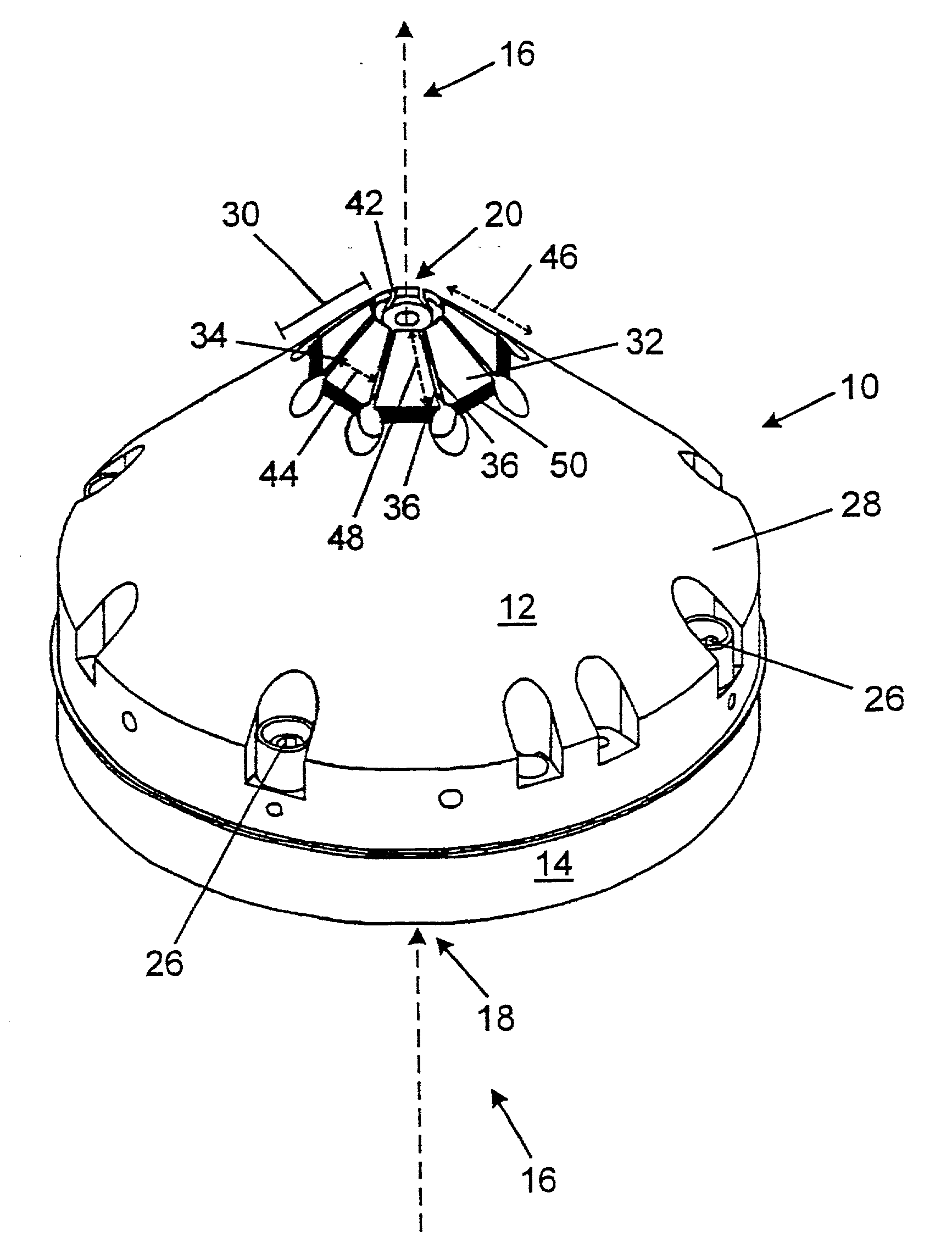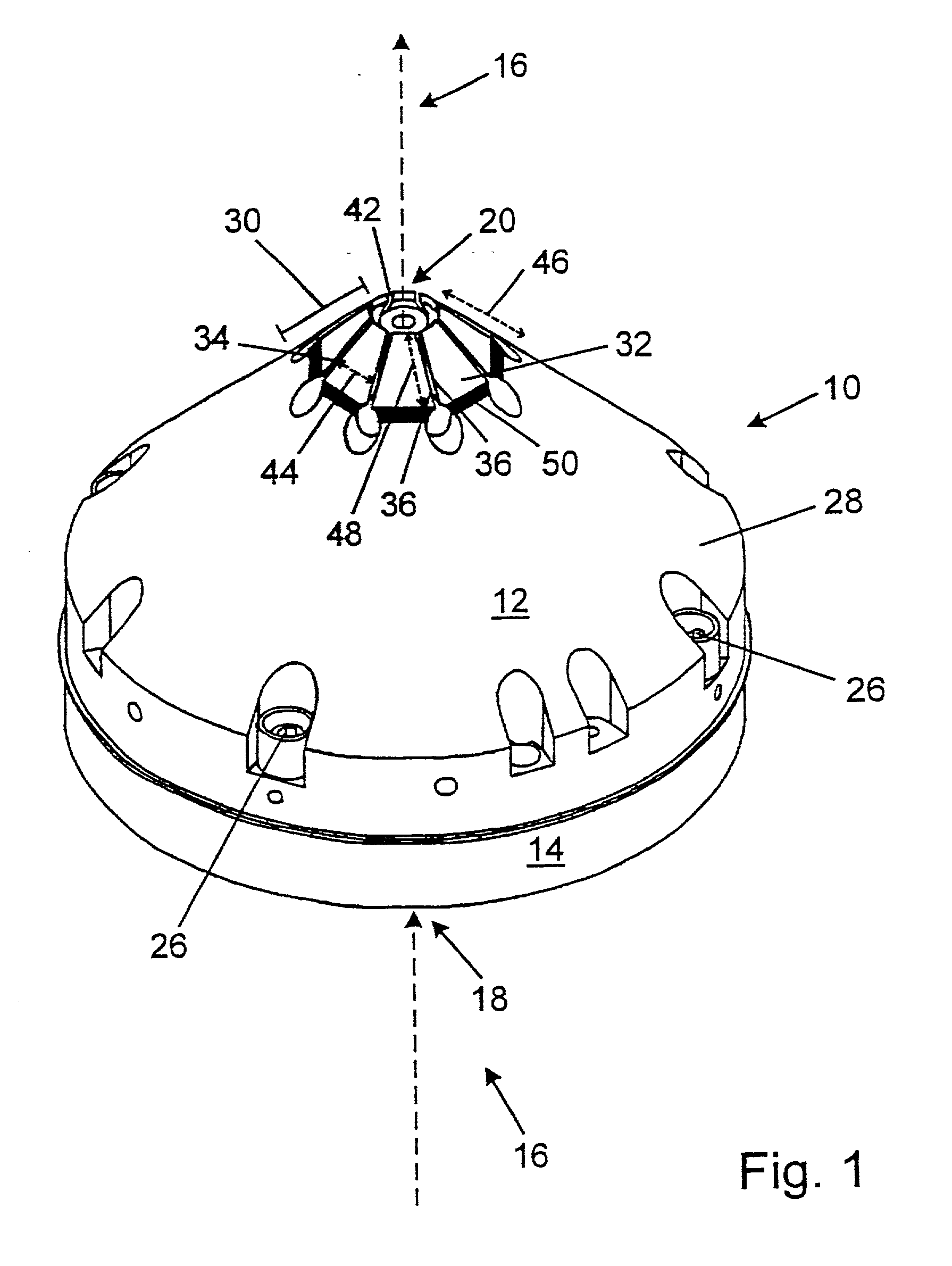Optical microscopes generally have an inherent resolution limit of approximately 200 nm and have limited usefulness in current manufacturing processes.
High voltage electrons may penetrate deep into a semiconductor substrate or a portion of a semiconductor formed upon a semiconductor substrate thereby damaging the substrate or the device and rendering it unsuitable as a working device such as an
integrated circuit.
Although electron beams may be deflected by this lens, astigmation may still be a problem.
The overall alignment of the lens
system, however, may be non-colinear due to the incorporation of such a separate feature.
Therefore, complexity of the overall alignment of the
system increases when the
charged particle beam is forced to pass through successive non-colinear points.
There are, however, several disadvantages to the lens systems described above.
Hysteresis may cause a relationship between the
excitation coil current and the deflected beam position to depend upon past deflection history.
Therefore, accurate focus of an electron beam using the magnetic lens may be extremely difficult to maintain and control.
Therefore, the center of the lens may shift due to
thermal expansion of the materials used to construct the lens.
Immersion lenses are also limited in their application to a variety of specimens.
Due to space limitations, immersion lenses may not be able to accommodate a large specimen such as a semiconductor substrate.
Modifying these lenses in order to accommodate such large semiconductor substrates may also adversely affect the performance of immersion lenses.
Alternatively, reducing the size of the semiconductor substrate by cross-sectioning the
wafer is not usually an option due to the cost associated with destroying a product
wafer.
Asymmetric immersion lenses may be more flexible to accommodate large specimen such as semiconductor substrates, but these lenses may have a reduced capability to detect
secondary electrons.
In addition to the above disadvantages, the performance of magnetic lenses may also be limited due to changes in the magnetic
field strength due to
low frequency noise, drift in the performance of current drive
electronics, drift due to eddy currents or superimposed fields from other sources, and drift in the magnetic field strength over time from other causes.
Although a magnetic lens design may minimize these effects on the performance of the lens, it may not be possible to substantially eliminate magnetic field drift of the lens.
For example, eddy currents due to
magnetic flux leakage from a lens through a gap in the magnetic lens may adversely affect the performance of the magnetic lens.
Because a magnetic lens must be designed with a bore to allow the electron beam to travel through the lens, however, it is impossible to seal the magnetic lens off completely.
As a result, some of the magnetic field will inherently "leak" out of a magnetic lens.
Therefore, the effects of eddy currents on the performance of a magnetic lens may not be completely eliminated due to usage requirements.
Drift in the magnetic field may cause the electron beam to drift out of focus.
Mechanical focus methods, however, may be slow due to the time required for moving the devices.
In addition, microscopic vibrations due to mechanical motion of the alignment yoke may need to settle before the magnetic lens may perform adequately.
Hysteresis in the magnetic field strength may also be induced from frequent changes in the
voltage supplied to a magnetic lens.
Therefore, frequently adjusting the beam
voltage may increase the complexity of a current history of the lens.
As the complexity of the current history increases,
hysteresis will also become more problematic.
Therefore, estimating the magnetic field strength using measurements of the current in the lens coil may induce error in this method.
In addition, the coil and the core materials may react in a non-ideal way to the frequent changes in the current being supplied to the coil.
Although such a method for focusing the electron beam may reduce deleterious effects of hysteresis in the current of the magnetic objective lens, other factors that may lead to defocusing may not be addressed in this design.
For example, as mentioned above, other factors that may hinder the performance of a magnetic lens may include thermal changes in the material properties, drift in the current drive
electronics, drift in the magnetic field due to eddy currents, and drift due to superimposed fields from other sources.
The resulting magnetic field, however, may follow a nonlinear relationship with the current due to hysteresis in the magnetic lens and the behavior of the coil and the core materials in response to the change in current.
This
iterative method also depends on operator judgement and is consequently subject to error.
More importantly, the additional sources of magnetic field drift described above may also cause this magnetic field to be irreproducible.
Such air gaps may induce eddy currents in the outer pole pieces and the lens coil.
As the dimensions of devices shrink, it is becoming increasingly difficult to successfully fabricate semiconductor devices.
Therefore, the initial
magnetic potential may not sufficiently reduce aberrations in, or focus, the
charged particle beam in order to obtain an adequate image of the specimen.
Magnetic field drift may occur due to the performance of the electron
beam source, hysteresis effects within the magnetic lens, temperature dependent properties of the magnetic lens, and / or drift caused by sources external to the magnetic lens.
As such, the low-pass
filter element may prevent fluctuations in the current supplied to the magnetic lens, which may adversely affect the performance of the magnetic lens.
 Login to View More
Login to View More  Login to View More
Login to View More 


